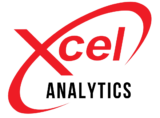
Programming with C
C is a general-purpose, high-level programming language that was first developed in the early 1970s by Dennis Ritchie at Bell Labs. It is a procedural language, which means that it is based on a series of procedures or functions that are executed in a specific order to accomplish a task. C is widely used for systems programming, as well as for creating applications for embedded systems, desktop applications, and other fields. It is known for its efficiency and flexibility, and has been used to create many widely-used operating systems, including Windows and Unix. C is also the foundation of many other programming languages, including C++, Java, and C#.
- Introduction to programming and C language syntax: This includes an introduction to the basics of programming concepts such as data types, variables, operators, control structures, and functions.
Input and output: This covers the use of input and output functions in C, such as scanf() and printf().
Flow control: This includes the use of conditional statements (if, else, switch) and loops (for, while, do-while) to control the flow of a program.
Arrays and strings: This covers the use of arrays and strings in C, including how to declare, initialize, and manipulate them.
Pointers: This covers the use of pointers in C, which are variables that store memory addresses. It includes topics such as pointer arithmetic, pointer dereferencing, and the use of pointers in arrays and strings.
Structures and unions: This covers the use of struct and union types in C, which are used to group together different data types.
File handling: This covers the use of file input and output functions in C, such as fopen(), fread(), and fwrite().
Advanced topics: Depending on the course, this may include topics such as dynamic memory allocation, linked lists, recursion, and multi-threading.
Project work: In which students will have the opportunity to apply the knowledge they have learned in the course by working on a programming project.
